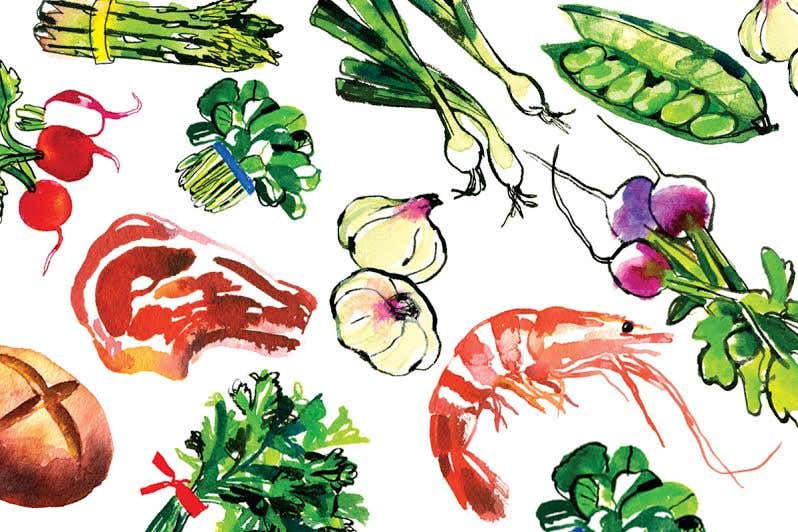
The Argentine Way with Beef
At asados, or cookouts, all across Argentina, the ritual is the same.
At cookouts, or asados, all across Argentina, whether in the casual restaurants called parrillas or in private backyards, the ritual is the same. Holding your plate, you stroll over to the grill and just take in the sight—and smoky, rich scent—of meats sizzling: all kinds of meats, from chubby chorizos (spicy sausages), splitting with juice, to crisp sweetbreads, to whole hunks of golden tenderloin. You tell the grill man, the parrillero, which you'd like to try. He serves you a few choice chunks and slices—but not too many; the point is to eat a few hot bits at a time, then go back, and back, and back for more. There's even a saying for this gustatory dance: ''Asado es un viaje de ida y vuelta''—''Asado is a journey of going and coming.''
Argentine beef is cooked long and slow, over embers. Since the meat is so lean, you'd expect it to dry out, but in fact the steaks and roasts end up crispy on the outside and juicy on the inside. Argentines prefer their meat well-done, but it's quite permissible to request a rare slice from the parrillero. Here are a few more secrets about the Argentine way with beef:
THE WOOD Argentines use quebracho leña, an all-natural wood from an indigenous hardwood tree. Wood is often supplemented with all-natural charcoal (about a pound per person). Treated woods, coal, and lighter fluids are never used because they taint the flavor of the meat.
FIRE Argentines heap a small pile of wood in a special basket, slip a bit of newspaper under the wood, and light the paper. Sometimes they'll drip wax on the paper before lighting it, turning it into a sort of wick. The fire must be fed throughout the asado.
THE GRILL Argentine grills, or parrillas, are more advanced in design than most American models. They are constructed with a fire basket, where the fire is started and maintained; it's placed either in the middle of the grill or off to one side. As the fire burns, the embers fall through holes in the bottom of the basket and are then spread out under the grate. The grate itself can be raised, lowered, or tilted, assuring that the meat is cooked over constant heat. Many Argentine grills have a sort of ''canal'' mechanism that prevents the dripping fat from hitting the embers; if this happens, it causes flare-ups and smoke, both of which interfere with the flavor of the beef.
THE MEAT Argentine beef has been coming to this country since October 1997; however, the meats are familiar U.S. cuts and are imported boneless. A typical asado has chorizos and morcillas (blood sausages), as well as variety meats such as mollejas (sweetbreads) and chinchul'n (intestines). Asado staples include whole roasts such as bife ancho, the equivalent of our rib eye; bife angosto, strip loin; lomo, or tenderloin (the parrillero cuts the cooked roasts into thick, steaklike slices); matambre, a type of flank steak (the term also refers to the elaborate stuffed dish using this cut; see recipe); and tira de asado, a popular cut, original to Argentina, in which the rib section is sliced crosswise to produce narrow strips of meat and bone.
ENJOYING THE MEAL The asado gets underway with sausages and variety meats, which you snack on while the parrillero heaves the roasts—seasoned only with coarse salt—onto the grill. Given the national penchant for well-done meat, some of these big pieces can take up to 2 hours to cook. He'll usually keep the first meats going, too, just in case someone wants a few more slivers of sweetbreads or chorizo. The parrillero is in constant motion, shuffling the meats strategically over the grill's hot and cold spots, turning each piece the traditional four times, and stoking the fire. This is high-maintenance cooking. Guests, on the other hand, enjoy a leisurely meal of hot beef dipped in chimichurri, crusty rolls, and a few vinegary salads. It's quite a way to spend an afternoon.
Keep Reading
Continue to Next Story
